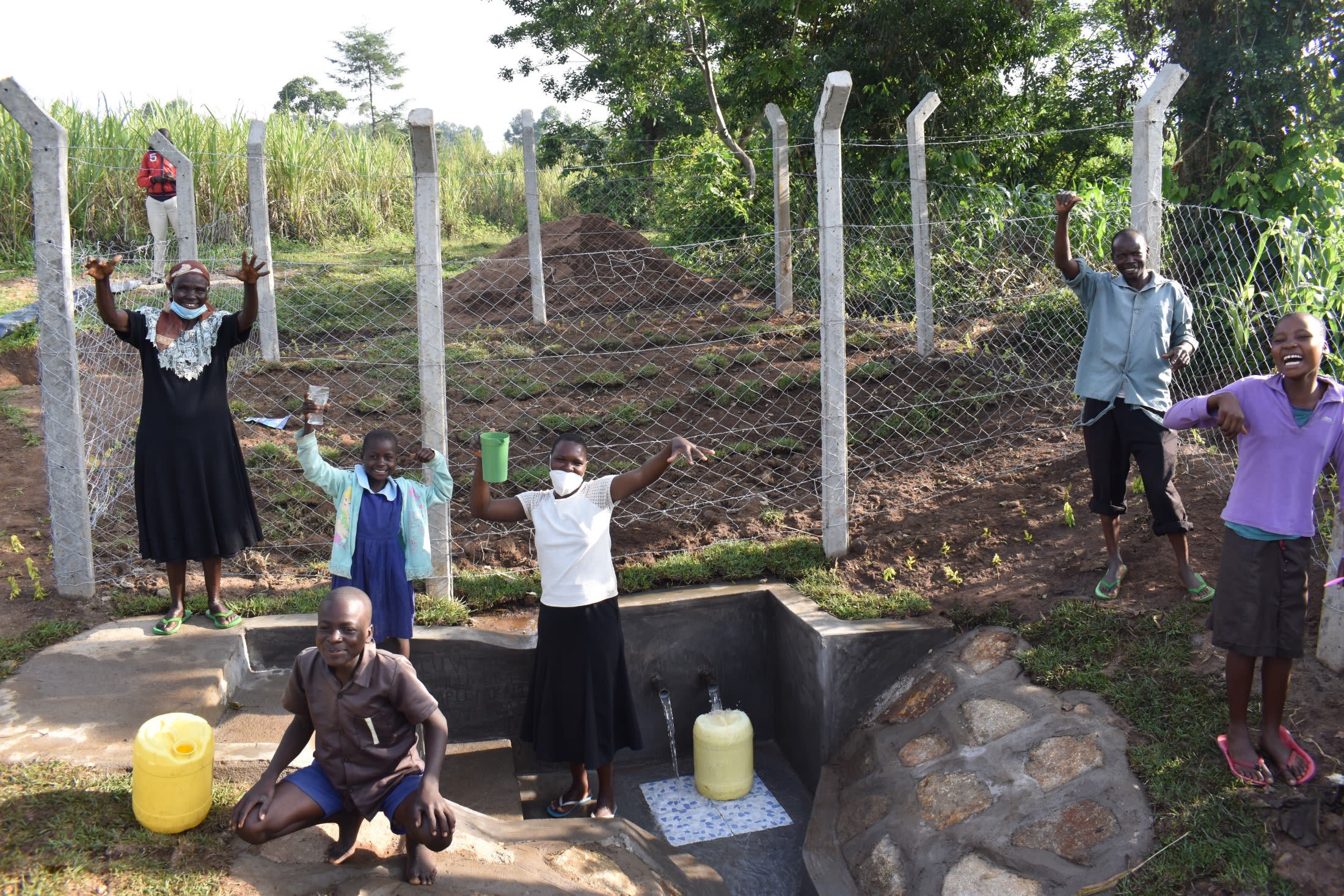Sundulo B is rural community sprinkled with huge rocks within families' compounds and farms despite the place not being hilly. The rocks capture one's attention when moving through this village. A bumpy earth road leads to the Sundulo shopping center from where one can now walk to reach unprotected Luvisia Spring, which currently serves 300 people in the area. Homes here are semi-permanent structures, and the high vegetation in this village makes it green to the eye. The roads passing within the village are merely footpaths. Community members practice commercial and subsistence crop farming in addition to rearing dairy livestock. Some people also engage in small-scale business at Sundulo shopping center.
Luvisia Spring is open to contamination. Though once partially protected, the work was not done to standard and has since fallen into disrepair, jeopardizing the water's safety and quality. The community members have hours set aside for fetching water each morning and evening because that is when the water is less contaminated, they say. This has affected scheduling morning and evening hours for any other chore apart from fetching water.
Despite these preferred hours, the water is not safe for consumption at any time of day. To fetch water, women and children dip small jugs into the murky pool of water to then pour into their larger jerrycans. The process is time-consuming and tiring. The more people who fetch the water in succession, the more mud and sand get stirred up in the water.
"There is nothing as terrible as knowing that you are consuming dirty water, yet there is nothing you can do about it. The outcome is always devastating, especially among the young children. As a mother, this affects me so much seeing my children sick and helpless," said Jean Satia.
"It's not easy fetching water from this water point. The work involved in it - scooping and filling the container - is tiresome. It denies me time to play with my friends," said young Festus.
When people contract waterborne diseases from the spring, families drain their little financial resources paying for medicine. When sick, kids have to stay home from school and adults miss out on their productive time, compounding the time lost scooping water at the unprotected spring every day.
What We Can Do:
Spring Protection
Protecting the spring will help provide access to cleaner and safer water and reduce the time people have to spend to fetch it. Construction will keep surface runoff and other contaminants out of the water. With the community’s high involvement in the process, there should be a good sense of responsibility and ownership for the new clean water source.
Fetching water is a task predominantly carried out by women and young girls. Protecting the spring and offering training and support will, therefore, help empower the female members of the community by freeing up more of their time and energy to engage and invest in income-generating activities and their education.
Training on Health, Hygiene, COVID-19, and More
To hold trainings during the pandemic, we work closely with both community leaders and the local government to approve small groups to attend training. We ask community leaders to invite a select yet representative group of people to attend training who will then act as ambassadors to the rest of the community to share what they learn. We also communicate our expectations of physical distancing and wearing masks for all who choose to attend.
The training will focus on improved hygiene, health, and sanitation habits in this community. We will also have a dedicated session on COVID-19 symptoms, transmission routes, and prevention best practices.
With the community’s input, we will identify key leverage points where they can alter their practices at the personal, household, and community levels to affect change. This training will help to ensure participants have the knowledge they need about healthy practices and their importance to make the most of their water point as soon as water is flowing.
Our team of facilitators will use a variety of methods to train community members. Some of these methods include participatory hygiene and sanitation transformation, asset-based community development, group discussions, handouts, and demonstrations at the spring.
One of the most important issues we plan to cover is the handling, storage, and treatment of water. Having a clean water source will be extremely helpful, but it is useless if water gets contaminated by the time it is consumed. We and the community strongly believe that all of these components will work together to improve living standards here, which will help to unlock the potential for these community members to live better, healthier lives.
We will then conduct a small series of follow-up trainings before transitioning to our regularly scheduled support visits throughout the year.
Training will result in the formation of a water user committee, elected by their peers, that will oversee the operations and maintenance of the spring. The committee will enforce proper behavior around the spring and delegate tasks that will help preserve the site, such as building a fence and digging proper drainage channels. The fence will keep out destructive animals and unwanted waste, and the drainage will keep the area’s mosquito population at a minimum.

 Protected Spring
Protected Spring
 Rehabilitation Project
Rehabilitation Project



































